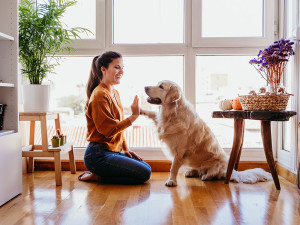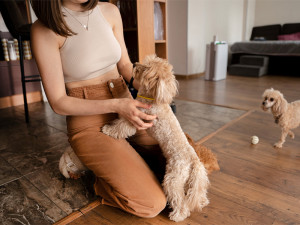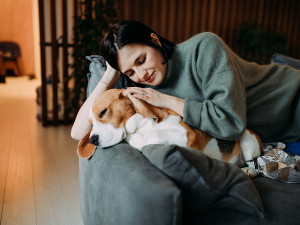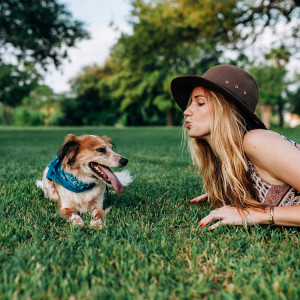How to Teach Your New Dog Your Name
Your dog might not know your name. Don’t take offence – just play this game
Many dogs already know the names of the humans they live with; it’s only natural that they notice that certain words go with certain people. When you think about it, we humans use each other’s names a lot – saying hello, getting each other’s attention and calling out into the void to see if someone is around. We also tend to announce someone’s arrival, as in, “Josh is home!” So, it��’s possible your dog already knows your name (and the names of your family members). But if they haven’t caught on, there’s an easy and fun way to teach your dog human names.
Play the game ‘Family Circle’
One of the easiest ways to teach a dog the names of everyone in the family is with a game called Family Circle. Here’s how to play.
Sit in a spread-out circle with at least two other people.
Have one person in the circle – for example, someone named Josh – ask, “Where’s [your name]?”
After Josh says your name, call the dog to come to you.
If the dog comes to you, give them a treat or other reinforcement. If they go to someone else, ignore them.
Then, it’s your turn to cue the dog on where to ask, “Where’s Josh?”
Josh calls the dog.
If the dog goes to Josh, they get reinforced.
Josh cues the dog – and so on.
Keep in mind that this game works best with at least three people. With only two people, the dog may learn that the correct response is to go to the person who did not just say “Where’s...?” without necessarily learning names.
Next, up the difficulty level
In the early stages of training your dog to play Family Circle, they should always be told the name of the person they must go find and hear that person call them to come. The person should also be within sight of your dog. Later, as your dog becomes more competent, the cue “come” can be dropped; and later still, the game can be played when the person they have to find is out of sight.
There are many practical applications, including in the event of a lost person, or even when someone has just gone out of sight or earshot briefly. It also teaches dogs to find the person in response to the cue and gives them great practice with their recall. Among the other benefits: the dog can get physical exercise without their parents having to move, and it can help keep a dog occupied mentally when you’re too busy to engage in more active play. Win-win.








